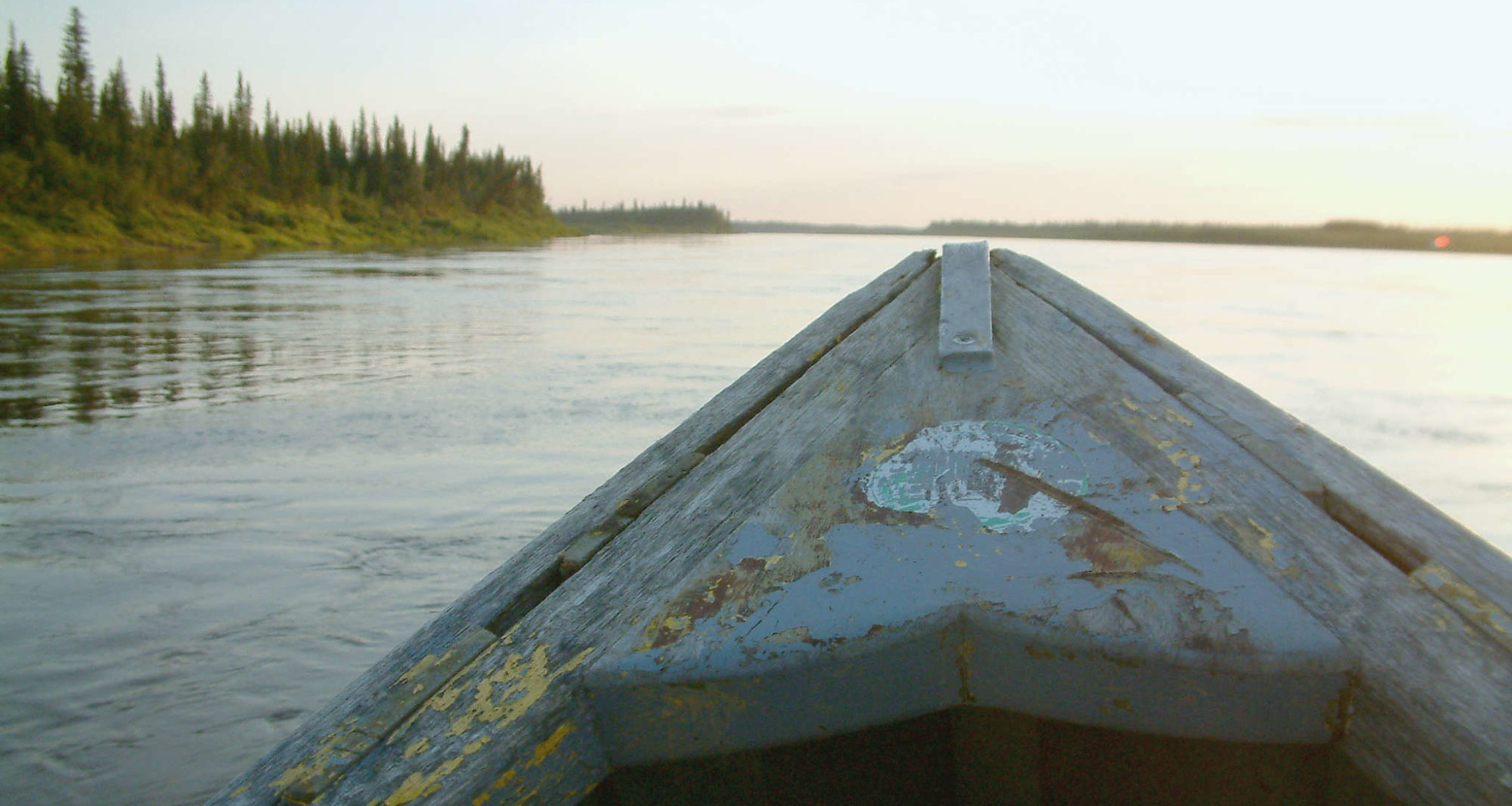Ghost Towns
I recall a trip by snowmobile a few years ago with my dad Marius Kataquapit and my brothers. We were on an excursion to visit a couple of legendary ghost towns up the coast about 160 kilometers north of Attawapiskat.
It was only about thirty below zero when we headed out from home to follow the frozen coast line of the great James Bay on our snowmobiles. However, thirty below, riding along at 70 kilometers an hour over the frozen muskeg was almost unbearable. There were three snowmobiles on this run up the coast and for good reason. You don’t want to be alone and stranded if your snow machine breaks down in the freezing cold, hours from home.
As we sliced through the frosty air, the hours slipped by painfully slow, even though we stopped often to warm up with a drink from our thermos of tea. Out on James Bay, this far north, only the seasoned hunter or trapper knows his way around. Everything looked the same as we made our way along the frozen coast line. Marius, led us on with his vast knowledge of this land that seemed at times to be mirrored and had no obvious land marks. If I had been on this trip myself, I would have been lost.
We finally arrived at what was left of an abandoned Hudson Bay trading post at Lakitusaki River. It was a trip back in time to visit this spot, on the river that was once a major fur trading point on James Bay. The old wooden church and the deteriorating Hudson Bay store were still standing and provided a hint of what was once a thriving operation in the days of the fur trade. We were happy to bed down for the night in the weathered but still comfortable haven of the Bay store. We dragged in a make-do, 45 gallon drum stove, rigged up a chimney, started a fire and spent a comfortable night protected from the elements.
The next day we headed north again to a more recently abandoned place, a few hours up the coast. The treeline disappeared on this part of the journey as we entered into the tundra. The weather had taken a turn for the worst and we knew by instinct that the temperature had slipped to about fifty below zero. The wind had picked up and swept across the tundra and the frozen bay. It seemed as though we were riding through a foggy mist of white, with patches of dark blue sky visible from inside the whirling snow that seemed unending.
Finally we saw the hint of something up ahead and soon after we arrived at Site 415, the abandoned military base that was part of the DEW line, during the cold war. It was dangerously cold here and even though we lit a huge fire, the cold was ever present.
It was strange to walk through this ghost village, built in the middle of nowhere, in the midst of the tundra. Standing quiet in the heart of the complex, I imagined the hundreds of military personnel going about their business in their offices, barracks and maintenance garages.
Four radar dishes still towered six stories over the complex. I saw several vehicles that had been left here to rot as mother earth slowly reclaimed her place. It was sobering indeed to see this place; it was as though we had traveled to the end of the world. I felt as though I was visiting the remnants of some mighty, lost civilization that had passed into oblivion.
For an instant, the thought flashed through my mind that this sight before me was a foreshadowing of things to come. I thought of the strength of my people and our ability to adapt and survive in the worst of situations. It dawned on me, that no matter what technology we produce, if we do not take care of our mother earth and be good to each other then some day, perhaps one of my people in the future will come across remnants of who we were, in much the same way I did at the old Hudson Bay post and site 415.
Freighter Canoes provide transportation for the people of Attawapiskat First Nation. Attawapiskat is a remote fly in community. The local rivers and lakes are the highways of the north and the freighter canoe provides the only means of ground transportation to traditional territories.
